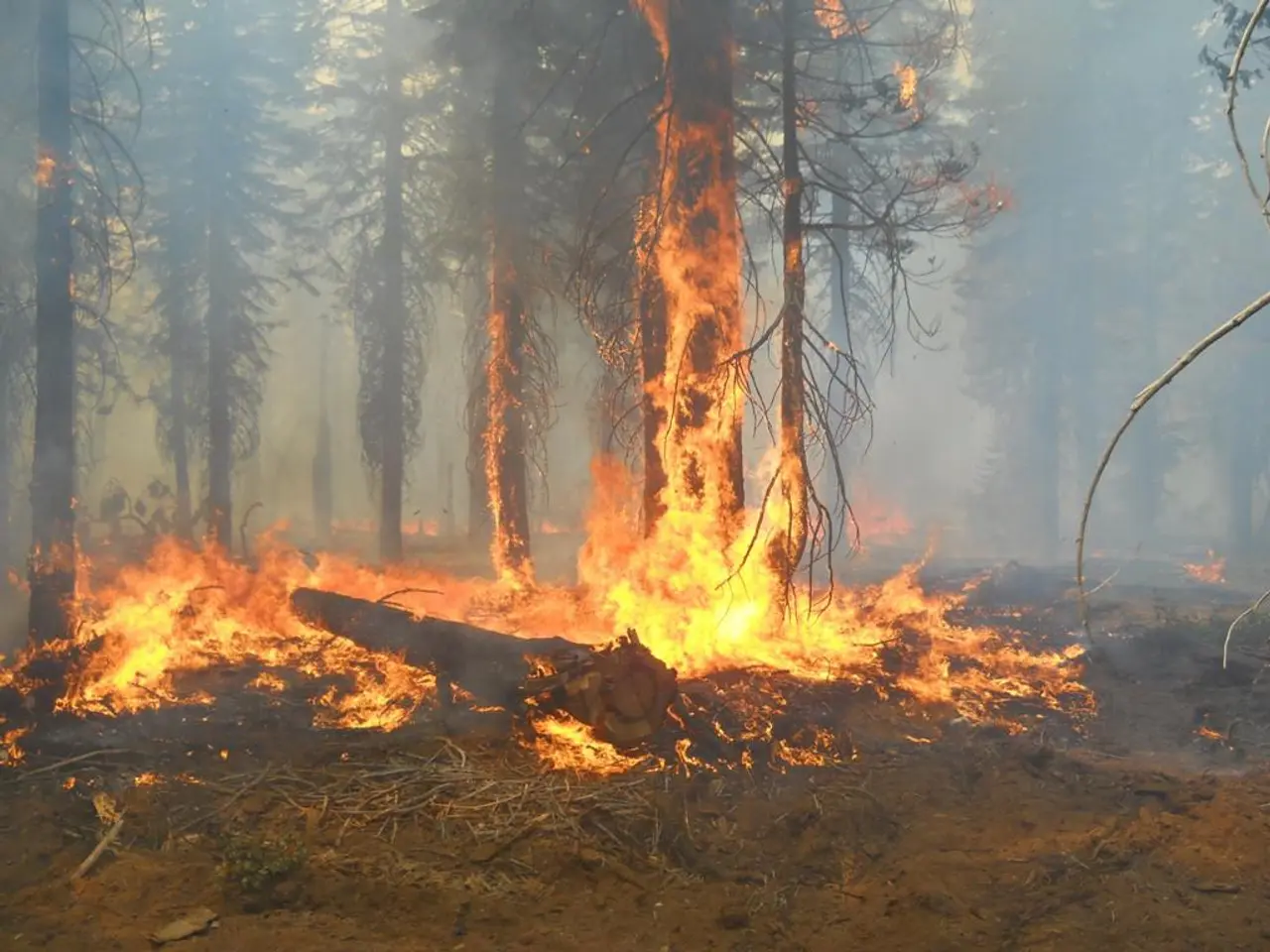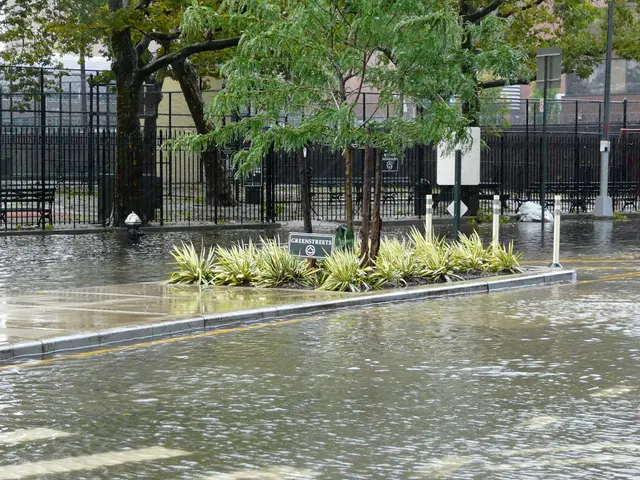Escalating wildfire risk liable to reach its peak warning grade once more - Danger of forest fire escalating to maximum alert status
In the heart of Germany, the state of Saxony has been grappling with significant wildfire events, most notably in July 2025. The Ghorischheide area in northern Saxony witnessed a large wildfire that burned approximately 2,100 hectares over several days, prompting precautionary evacuations of some homes [1]. This wildfire was part of a broader pattern of increased wildfire activity across Europe during the first half of 2025, driven by intense heatwaves and dry conditions [3][4].
Historically, parts of eastern Germany, including Saxony, have faced forest fire risks due to their climatic conditions. Authorities have become increasingly prepared to respond, even mobilizing the military for aerial firefighting support [1]. The introduction of warning systems, such as the federal government's NINA app, has been instrumental in providing timely alerts about wildfire risks, complementing efforts to protect people and property during high fire danger periods [1].
Looking ahead, predictions indicate that climate change and associated extreme heat events are expected to increase the frequency and intensity of forest fires in regions like Saxony. The 2025 European heatwaves, characterized by record-breaking temperatures and extended periods of dryness, have already contributed to heightened fire risks and are projected to become more common [4]. However, periodic shifts such as summer monsoons or heavy rainfall events affecting southern and parts of eastern Germany might temporarily reduce fire risk but also increase variability in weather patterns [2].
In response, enhanced forest fire management and civil protection strategies are being implemented across Europe, including in Saxony. These include improved monitoring, rapid mapping tools, early warning systems, and integrated emergency responses to mitigate the impact of fires, especially in areas where urban regions interface with wildlands [5].
As of Tuesday, the second-highest forest fire danger level (warning level 4, high danger) was in effect in northern regions of Saxony. On Thursday, the forest fire danger level in these areas is expected to be very high (warning level 5) [6]. The highest forest fire danger level is expected in parts of the districts of Nordsachsen and Bautzen, as well as the city of Dresden [6]. The forest fire danger level 5 indicates a very high danger of forest fires.
The state forestry authority has issued an overview indicating the forest fire danger levels in Saxony. The forest fire danger levels range from 1 (low danger) to 5 (very high danger) [7]. The forest fire danger level 4 (high danger) was in effect in northern regions of Saxony as of Tuesday [7]. The forest fire danger in Saxony is expected to reach the highest level (warning level 5, very high danger) in the coming days [7]. The forest fire danger levels are determined by the state forestry authority in Saxony [7].
Stay tuned for updates as Saxony navigates these challenging forest fire conditions.
- Scientists predict that climate change and associated extreme heat events will likely increase the frequency and intensity of forest fires in regions like Saxony, as the 2025 European heatwaves have already shown with their record-breaking temperatures and prolonged dryness contributing to heightened fire risks.
- In the aftermath of the significant wildfire in northern Saxony, which burned about 2,100 hectares in July 2025, authorities have since been employing environmental-science approaches, such as improved monitoring, rapid mapping tools, and early warning systems, to better predict and manage forest fire risks.
- As part of their enhanced forest fire management and civil protection strategies, authorities in Saxony and across Europe have been implementing general-news procedures intended to address the rising concern of forest fires, including integrating emergency responses and utilizing technologies like the federal government's NINA app for timely alerts.








